Neosperidin dihydrochalcone
Synonym(s):1-(4-((2-O-[6-Deoxy-α-L -mannopyranosyl]-β-D -glucopyranosyl)oxy)-2,6-dihydroxyphenyl)-3-[3-hydroxy-4-methoxyphenyl]-1-propanone;NHDC
- CAS NO.:20702-77-6
- Empirical Formula: C28H36O15
- Molecular Weight: 612.58
- MDL number: MFCD00017711
- EINECS: 243-978-6
- SAFETY DATA SHEET (SDS)
- Update Date: 2025-12-25 11:31:46
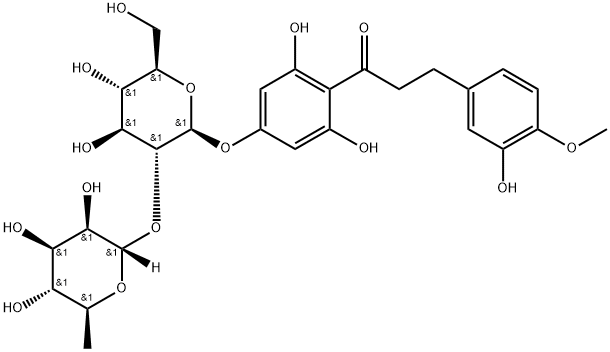
What is Neosperidin dihydrochalcone ?
Chemical properties
Neohesperidin dihydrochalcone occurs as a white or yellowish white powder with an intensely sweet taste. The sweetness is about 1500-1800 times that of sucrose, and its sweetness time is slightly later than saccharin sodium and much faster than glycyrrhizin (5:7:23s). The sweetness retention time of the three is 42:57:133s, which is also between Between the two, it is closer to sodium saccharin. It is soluble in water, slightly soluble in ethanol, but insoluble in ether and benzene.
The Uses of Neosperidin dihydrochalcone
Preparation from Naringen, a flavanone glycoside occurring naturally in grapefruit. It is used as sweetening agent, especially in chewing gum and dentifrices.
The Uses of Neosperidin dihydrochalcone
Neohesperidin dihydrochalcone hydrate, is a flavonoid sweetening agent with potent antioxidant activity. It is antioxidant agent. artificial sweetener, especially in chewing gum and dentifrices.
What are the applications of Application
Neohesperidin dihydrochalcone is a flavonoid sweetening agent with potent antioxidant activity
Definition
ChEBI: Neohesperidin dihydrochalcone is a member of the dihydrochalcones that is 3,2',4',6'-tetrahydroxy-4-methoxydihydrochalcone attached to a neohesperidosyl residue at position 4' via glycosidic linkage. It is found in sweet orange. It has a role as an environmental contaminant, a xenobiotic, a plant metabolite and a sweetening agent. It is a neohesperidoside, a disaccharide derivative and a member of dihydrochalcones.
Production Methods
Neohesperidin dihydrochalcone is synthesized commercially from either of the bitter-flavanones neohesperidin or naringin by catalytic hydrogenation under alkaline conditions in a process first described in the 1960s, in which neohesperidin is purified by recrystallization from water solutions.Neohesperidin dihydrochalcone is obtained by the alkaline hydrogenation of neohesperidin.
Preparation
Neosperidin dihydrochalcone is produced from Neohespendin (an isomer of Hesperidin), derived from the peel of the Seville Orange.
General Description
Off-white crystals or powder. Insoluble in water.
Air & Water Reactions
Insoluble in water.
Reactivity Profile
Neosperidin dihydrochalcone is a ether-alcohol derivative. The ether being relatively unreactive. Flammable and/or toxic gases are generated by the combination of alcohols with alkali metals, nitrides, and strong reducing agents. They react with oxoacids and carboxylic acids to form esters plus water. Oxidizing agents convert alcohols to aldehydes or ketones. Alcohols exhibit both weak acid and weak base behavior. They may initiate the polymerization of isocyanates and epoxides.
Fire Hazard
The flash point of Neosperidin dihydrochalcone has not been determined, but Neosperidin dihydrochalcone is probably combustible.
Flammability and Explosibility
Not classified
Pharmaceutical Applications
Neohesperidin dihydrochalcone is a synthetic intense sweetening
agent approximately 1500–1800 times sweeter than sucrose and 20
times sweeter than saccharin. Structurally it is an analogue of
neohesperidin, a flavanone that occurs naturally in Seville oranges
(Citrus aurantium). Neohesperidin dihydrochalcone is used in
pharmaceutical and food applications as a sweetening agent and
flavor enhancer. The sweetness profile is characterized by a
lingering sweet/menthol-like aftertaste.The typical level used in
foods is 1–5 ppm although much higher levels may be used in
certain applications such as chewing gum. Synergistic effects occur
with other intense and bulk sweeteners such as acesulfame K,
aspartame, polyols, and saccharin.
In pharmaceutical applications, neohesperidin dihydrochalcone
is useful in masking the unpleasant bitter taste of a number of drugs such as antacids, antibiotics, and vitamins. In antacid preparations,
levels of 10–30 ppm result in improved palatability.
Safety
Neohesperidin dihydrochalcone is accepted for use in food products
either as a sweetener or flavor modifier in a number of areas
including Europe, USA, Australia, New Zealand, and several
countries in Africa and Asia. It is also used in a number of oral
pharmaceutical formulations.
Animal toxicity studies suggest that neohesperidin dihydrochalcone
is a nontoxic, nonteratogenic, and noncarcinogenic material at
the levels used in foods and pharmaceuticals.In Europe, an
acceptable daily intake of 0–5 mg/kg body-weight has been
established.
Storage
Neohesperidin dihydrochalcone is stable for over three years when
stored at room temperature.
Accelerated stability studies on aqueous solutions stored at
30–60°C and pH 1–7 for 140 days indicate that neohesperidin
dihydrochalcone solutions are likely to be stable for 12 months at
room temperature and pH 2–6.Solutions formulated with some
or all of the water replaced by solvents with a lower dielectric
constant are reported to have longer shelf-lives.
The bulk material should be stored in a cool, dry, place protected
from light.
Regulatory Status
GRAS listed. Accepted for use as a food additive in Europe.
Properties of Neosperidin dihydrochalcone
| Melting point: | 156-158 °C(lit.) |
| Boiling point: | 927.1±65.0 °C(Predicted) |
| Density | 1.61±0.1 g/cm3(Predicted) |
| vapor pressure | 0Pa at 20℃ |
| FEMA | 3811 | NEOHESPERIDIN DIHYDROCHALCONE |
| storage temp. | Sealed in dry,Store in freezer, under -20°C |
| solubility | Practically insoluble in water, freely soluble in dimethyl sulfoxide, soluble in methanol, practically insoluble in methylene chloride. |
| form | crystalline |
| pka | 6.85±0.40(Predicted) |
| color | light yellow |
| Odor | at 100.00 %. bland odor |
| Water Solubility | Insoluble |
| Merck | 14,6452 |
| Stability: | Hygroscopic |
| CAS DataBase Reference | 20702-77-6(CAS DataBase Reference) |
| EPA Substance Registry System | Neohesperidin dihydrochalcone (20702-77-6) |
Safety information for Neosperidin dihydrochalcone
| Signal word | Warning |
| Pictogram(s) |
 Exclamation Mark Irritant GHS07 |
| GHS Hazard Statements |
H302:Acute toxicity,oral |
| Precautionary Statement Codes |
P264:Wash hands thoroughly after handling. P264:Wash skin thouroughly after handling. P270:Do not eat, drink or smoke when using this product. P301+P312:IF SWALLOWED: call a POISON CENTER or doctor/physician IF you feel unwell. P501:Dispose of contents/container to..… |
Computed Descriptors for Neosperidin dihydrochalcone
| InChIKey | ITVGXXMINPYUHD-CUVHLRMHSA-N |
New Products
Indole Methyl Resin tert-butyl 9-methoxy-3-azaspiro[5.5]undecane-3-carboxylate Boc-His(Boc)-OH 2-CTC Resin 4-Chloro-7-tosy1-7Hpyrrolo[2,3-d]pyrimidine 5,7-Dibromo-1H-indole 2,5-dichloro-N-hydroxy-4,6-dimethylpyridine-3-carboximidamide 2,2-Dimethoxy-7-azaspiro[3.5]nonane hydrochloride 4-chloromethyl-5-methyl-1,3-dioxol-2-one (DMDO-Cl) R-2-BENZYLOXY PROPIONIC ACID 1,1’-CARBONYLDIIMIDAZOLE 1,1’-CARBONYLDI (1,2-4 TRIAZOLE) N-METHYL INDAZOLE-3-CARBOXYLIC ACID 4-((2-hydroxyethyl)thio)benzoic acid 1-(TERT-BUTOXYCARBONYL)-2-PYRROLIDINONE Methyl 6-methylnicotinate 3-Pyridineacrylic acid tert-Butyl carbazate TETRAHYDRO-2H-PYRAN-3-OL 2-((4-morpholinophenylamino) (methylthio) methylene) malononitrile 3-(4-morpholinophenylamino)-5-amino-1H-pyrazole-4-carbonitrile 2,4-dihydroxybenzaldehyde 1,3-Diethyl-1,3-Diphenylurea Methyl 2-methylquinoline-6-carboxylateRelated products of tetrahydrofuran

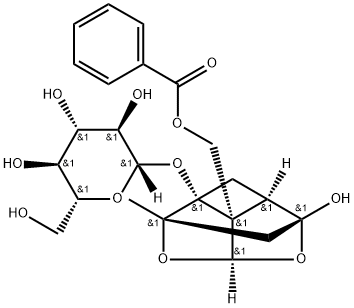
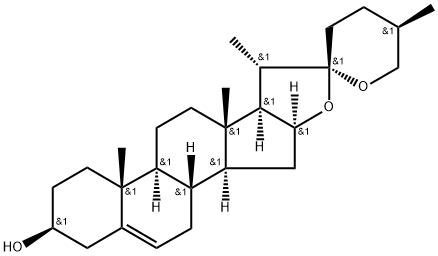
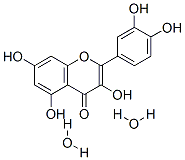

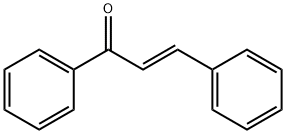
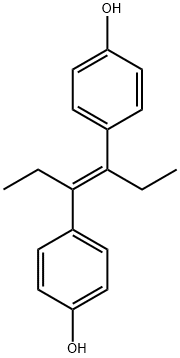
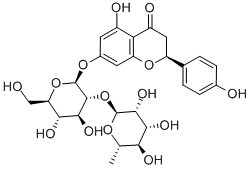
You may like
-
 20702-77-6 Neohesperidin dihydrochalcone 99%View Details
20702-77-6 Neohesperidin dihydrochalcone 99%View Details
20702-77-6 -
 Neohesperidin dihydrochalcone 98.00% CAS 20702-77-6View Details
Neohesperidin dihydrochalcone 98.00% CAS 20702-77-6View Details
20702-77-6 -
 Neohesperidine dihydrochalcone, 98% CAS 20702-77-6View Details
Neohesperidine dihydrochalcone, 98% CAS 20702-77-6View Details
20702-77-6 -
 Neohesperidin Dihydrochalcone CAS 20702-77-6View Details
Neohesperidin Dihydrochalcone CAS 20702-77-6View Details
20702-77-6 -
 Neohesperidin dihydrochalcone CAS 20702-77-6View Details
Neohesperidin dihydrochalcone CAS 20702-77-6View Details
20702-77-6 -
 Neohesperidin dihydrochalcone CAS 20702-77-6View Details
Neohesperidin dihydrochalcone CAS 20702-77-6View Details
20702-77-6 -
 Neohesperidin dihydrochalcone CAS 20702-77-6View Details
Neohesperidin dihydrochalcone CAS 20702-77-6View Details
20702-77-6 -
 Neohesperidin dihydrochalcone CAS 20702-77-6View Details
Neohesperidin dihydrochalcone CAS 20702-77-6View Details
20702-77-6
